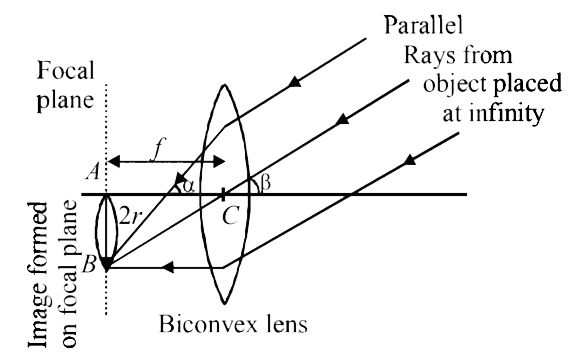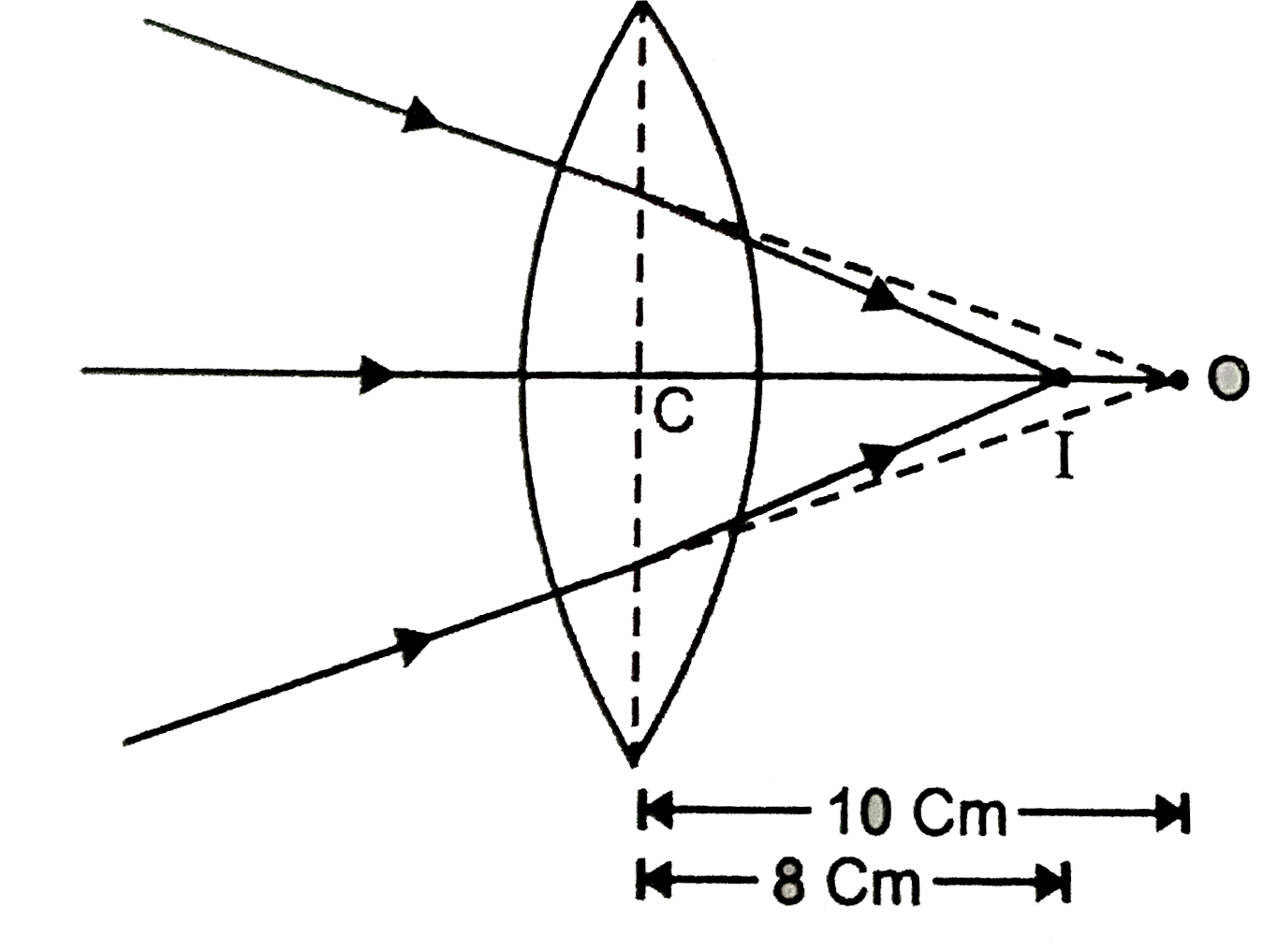Rays of light from Sun falls on a biconvex lens of focal length f and the circular image of Sun of radius r is formed on the focal plane of the lens. Then
Area of image is πr2 and area is directly proportional of f
Area of image is πr2 and area is directly proportional of f2
Intensity of image increases if f is increased
If lower half of the lens is covered with black paper area will become half
The correct Answer is:B

From the figure in △ ABC, tanβ=ABAC
⇒AB=ACtanbeta,2r=ftanbeta<br>implies Area of image=πr2∝f2
Topper's Solved these Questions
Similar Questions
Knowledge Check
Rays of light from Sunn falls on a biconvex lens of focal length f an the circular image of Sun of radius r is formed on the focal plane of the lens. Then,
Aarea of image is πr2 and area is directly proportinal of fBarea of image is πr2 and area is directly proportional to t2Cintensity of image increases if f is increasesDIf lower half of the lens is covered with black paper, area will become halfParallel rays of light from Sun falls on a biconvex lens of focal length f and the circular image of radius r is formed on the focal plane of the lens. Then which of the following statement is correct?
AArea of image πr2 directly proportional to fBArea of image πr2 directly proportional to f2CIntensity of image increases if f is increased.DIf lower half of the lens is covered with black paper area of image will become half.A biconvex lens of focal length f forms a circular image of radius r of sun in focal plane . Then which option is correct
Aπr2∝fBπr2∝f2Cif lower half part is covered by black sheet , then area of the image is equal to πr2/2Dif f is doubled , intensity will increase
A convex lens of focal length f produces an image 1/n times the size of the object. The distance of the object from the lens is
View SolutionA convex lens of focal length f produces an image 1/n times the size of the object. The distance of the object from the lens is
View SolutionA convex lens of focal length f produces a virtual image n times the size of the object. Then the distance of the object from the lens is
View SolutionWhen light rays from the sun fall on a convex lens along a direction paralle to its axis
View SolutionA convex lens of focal length f produces a real image m times the size of an object, then the distance of the object from the lens is
View Solution

 .
.